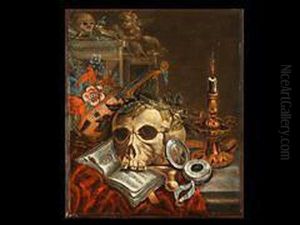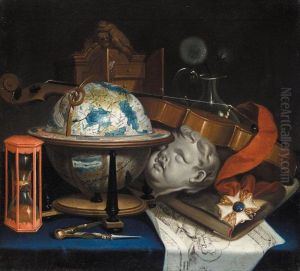Simon Renard De Saint-Andre Paintings
Simon Renard de Saint-André was a French painter and engraver born in 1613 in Lyon, France. He is particularly known for his contributions to the Baroque style, which was predominant in European art from the early 17th century until the mid-18th century. Renard de Saint-André's work is characterized by its dramatic use of light and shadow, a hallmark of the Baroque aesthetic, as well as its intricate detail and emotional intensity.
Renard de Saint-André received his early training in Lyon, a city with a rich artistic heritage. However, he soon moved to Paris to further his career, where he became associated with the court of King Louis XIV. His ability to capture the opulence and grandeur of the French court made him a favored artist among the nobility. Throughout his career, Renard de Saint-André painted a wide range of subjects, including religious scenes, portraits, and still lifes. His still lifes, in particular, are noted for their realism and the skill with which he rendered textures and surfaces.
Despite his success, much of Renard de Saint-André's life remains shrouded in mystery, and only a limited number of his works have survived. He was part of a generation of artists who contributed significantly to the development of French art during a period of intense artistic innovation and exploration. His works are preserved in several major museums and collections around the world, attesting to his enduring legacy.
Simon Renard de Saint-André died in 1677 in Paris. His contribution to the Baroque movement, while perhaps not as widely recognized as that of some of his contemporaries, remains an important part of the history of French art. Through his mastery of light, shadow, and detail, Renard de Saint-André captured the complexity and richness of the world around him, leaving a lasting impression on the art world.






























